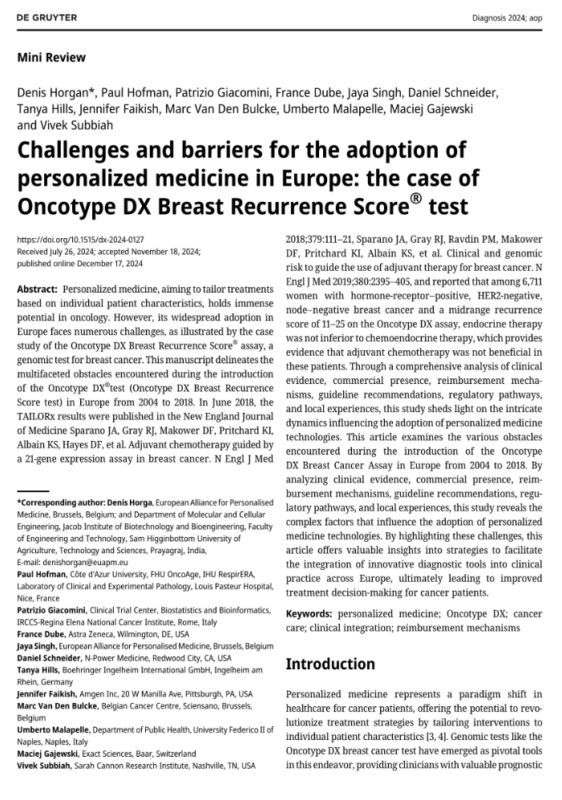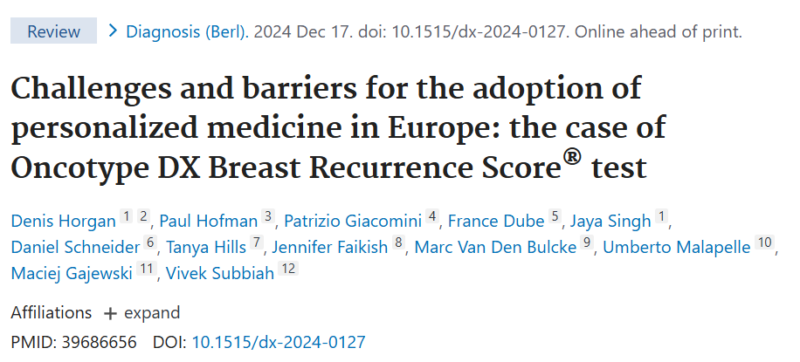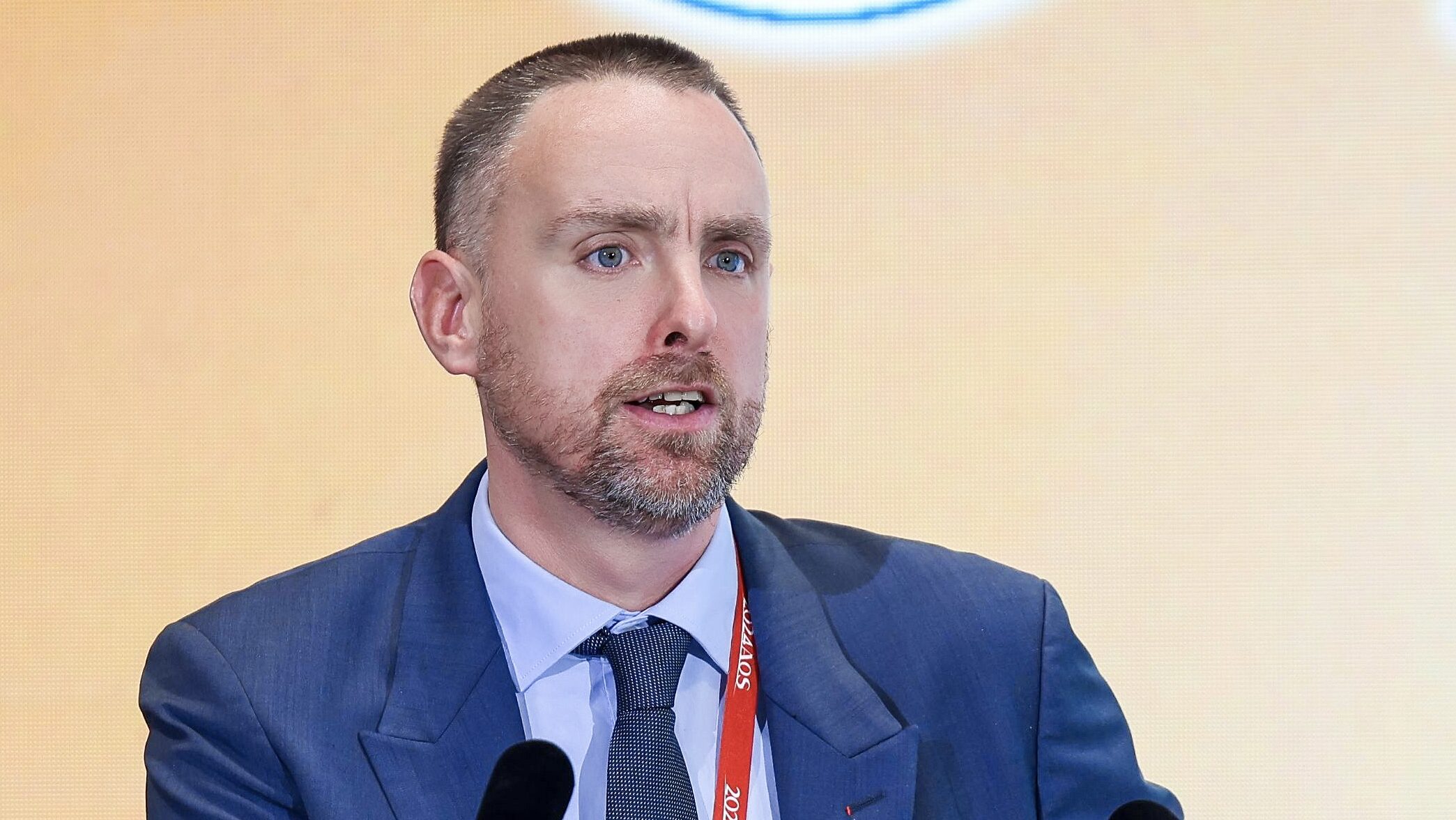Denis Horgan, Chair of ICGC ARGO Independent Advisory Committee at International Cancer Genome Consortium, shared an article on LinkedIn:
“Delayed Access to Personalized Medicine in the EU: What’s the Cost to Patients?
Brussels, December 18th, 2024: In our recent article, Challenges and Barriers for the Adoption of Personalized Medicine in Europe: The Case of Oncotype DX Breast Recurrence Score® Test, we build on the groundbreaking 2018 TAILORx study published in the NEJM. While TAILORx provided Level 1A evidence that many women with early-stage breast cancer could avoid unnecessary chemotherapy, our article focuses on the policy and regulatory issues that continue to delay the adoption of such innovations in Europe.
The Oncotype DX test is a prime example of how systemic delays hinder the integration of life-saving innovations into European healthcare systems. Despite being available in the U.S. as early as 2006, the adoption timeline in Europe tells a different story:
A Timeline of Delays Across Europe:
a) UK: NICE approved Oncotype DX in 2013, and NHS availability started in 2015 — a 9-year delay compared to the U.S.
b) Germany: Reimbursement approval came in 2019 — 13 years late.
c) France: Despite robust evidence, widespread use was delayed until 2019 through limited funding programs.
d) Spain & Ireland: Private insurance offered limited access in 2011, but broader public reimbursement took years.
These delays had serious consequences: thousands of patients endured unnecessary chemotherapy and its associated toxic side effects, despite a proven alternative being available.
Why the Delays?
- i) Regulatory Fragmentation: Each European country conducts its own Health Technology Assessments (HTAs), leading to repeated evaluations, inconsistent decisions, and slower adoption.
ii) Slow Evidence Integration: Even after the 2018 TAILORx study provided the highest level of clinical evidence, many countries took years to act.
iii) Reimbursement Barriers: Diverse and inconsistent reimbursement mechanisms.
A Need for Urgent Reform
The Oncotype DX case highlights broader issues with the EU’s healthcare innovation. The 2025 EU HTA Regulation aims to harmonize assessments, but political resistance and delays threaten its success.
To ensure timely access to innovations, Europe needs:
1) Unified HTA Standards: Cross-border evaluations to avoid duplicative processes.
2) Investment in Innovation: Support for localized clinical trials and diagnostic infrastructure.
3) Patient-Centric Policies: Prioritizing rapid adoption of proven technologies to avoid unnecessary treatments and improve outcomes.
The challenges we highlight are also critical for the upcoming Pharmaceutical Legislation, the In Vitro Diagnostic Regulation (IVDR), and the implementation of the HTA Regulation.
The Oncotype DX journey is a wake-up call. Europe cannot afford to lag behind. Policymakers, healthcare leaders, and industry stakeholders must act now to deliver timely access to innovation.”

Challenges and barriers for the adoption of personalized medicine in Europe: the case of Oncotype DX Breast Recurrence Score® test.
Authors: Denis Horgan, et al.

